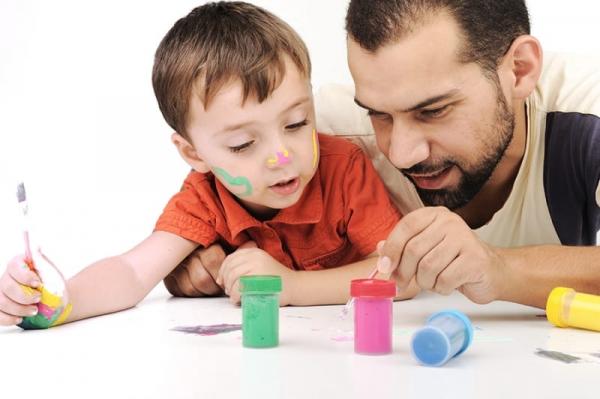
During a training on brain development and children I learned about windows of opportunity. For example language is best learned during the first 10 years of life. In that time, if you are like me, and you never heard someone speak Spanish or roll their Rs you may have a hard time rolling your Rs or learning to speak Spanish. It is not impossible, but it is not as easy as it was for my daughter who spent preschool in a bi-lingual class room. It is not something that can be learned from a flat screen television. A child's best experience is in our own 3 dimensional world.
Windows of opportunity for learning are like growing seasons in a child's brain. When a child is born their brain has only just begun to develop the millions of connections that will enable them to later learn more and grow. A window of opportunity or growing season for language is the best time in a child's life to expose him to what you are trying to teach. It will help the child develop brain connections and make learning later easier.
For example, if you had never experienced snow and I read you a story about snow and tried to describe it, it would be much harder to understand than if you had played with snow.
This information tells us that any exposure to experience, texture, smells and sounds we would like to teach children are best had as soon as possible. It is never too early to sing to a baby while cuddling. It is never too early to read a story to a child, even before they can speak.
Here are some games and ideas for playing and teaching your children.
Play dough colors, shapes and more
Homemade play dough with Kool-Aid powder added for color and scent makes a great toy, and learning experience for a 3 to 5-year-old. You can talk about shapes while you make them. You can count the number of balls you make with your hands. You can allow your child to mix the colors and learn that yellow and blue make green. Whip out the cookie cutters for shapes, or press hands, elbows, knees or feet into the dough to make impressions. Some doughs can even be baked, then painted.
Here is a simple recipe for homemade play dough.
Piece of the pie
I used this game when teaching my daughter about fractions. You can use anything that can be cut into sections, like pie sections, to play. We used play dough. Make a circle with the play dough, ask your child how many pieces you have. Explain that this represents one whole, or one entire piece. Write down the fraction 1/1. Then divide into two equal halves, ask how many pieces there are now. There are two halves, and they make one whole. Write down the fraction 2/1. You can make as many fractions, and explanations as you want. This is great for elementary aged children.
Kubb
This is a family favorite. We made the game ourselves, but you can purchase one online if you want. The rules are straightforward, however if you prefer the official rules, they can be found here.
The field is a large rectangle, twice as wide as it is tall. Place a marker in each corner, we use orange tent stakes.
Stand a large 4x4 piece of wood, or kingpin, about 18" tall on end in the middle of the field.
Each team places five shorter pieces, or Kubbs, on their baselines, these are the shorter ends of the rectangle. The kingpin represents the middle line of the field.
Each team positions itself behind the baseline, they then throw batons, or long thick dowels at each other's Kubbs. The Kubbs knocked over are then thrown across the midline into the other side's field, the other team has captured them.
Play continues until one team captures all of the other team's Kubbs, then knocks over the kingpin to win.
If you knock over the kingpin early, you lose.
This game can be very addicting, and a lot of fun for the whole family. You can focus on hand eye coordination as well as strategy in the placement of the Kubbs you capture. Of course, good sportsmanship is also learned, providing mom and dad give a good example.
Build off
This is a great way to spend a day indoors. We invented this game during a blizzard, and it stuck. Each child chooses a medium; Legos, Tinker toys, blocks or anything they can create a structure with. There are two categories, most creative, and tallest. Participants get 30 minutes to come up with a structure. The winners receive first pick of the cookies and hot chocolate. (Of course, you can come up with your own awards.)
The judging is silent. Each child writes on a piece of paper the name of another child's structure - you can't choose your own. Mom and dad get to vote, too. The child with the most votes wins. You can change the categories or the rules. It is amazing to see what your children will come up with, and the rebuilding can help them understand some laws of physics.
Body Art
No, we're not talking tattoos. Take sidewalk chalk out to a flat hard surface, like a driveway, and make an outline for each child of their body. Then, using an encyclopedia or picture, help them fill in their organs, muscles, or bones. This is great fun for the elementary age child and is a great activity for a summer day.
No matter what you do with your children, you can incorporate learning into almost every activity. Grocery shopping doesn't have to be boring when you discover new exciting fruits or crazy vegetables. Math isn't monotonous when pie is involved. Get your children thinking about the world around them, and watch their ideas explode.

